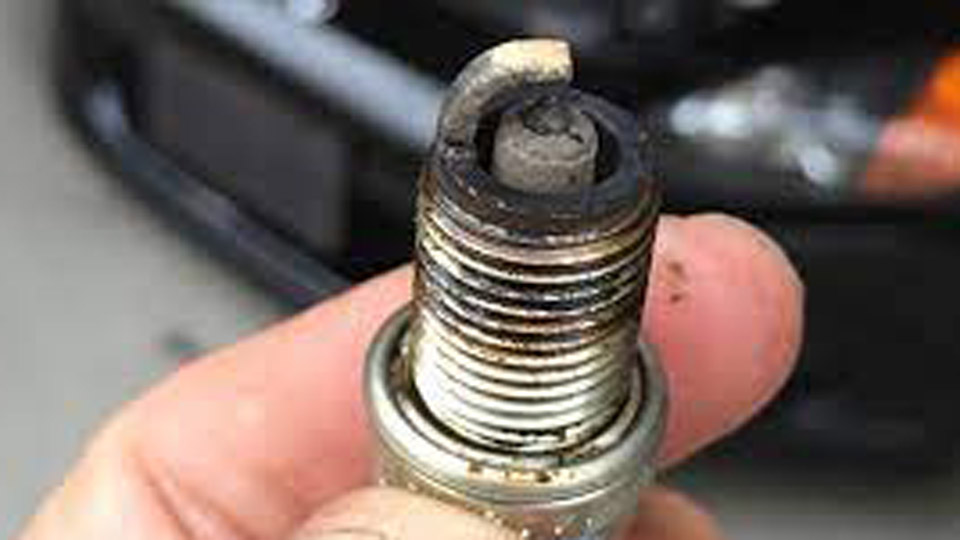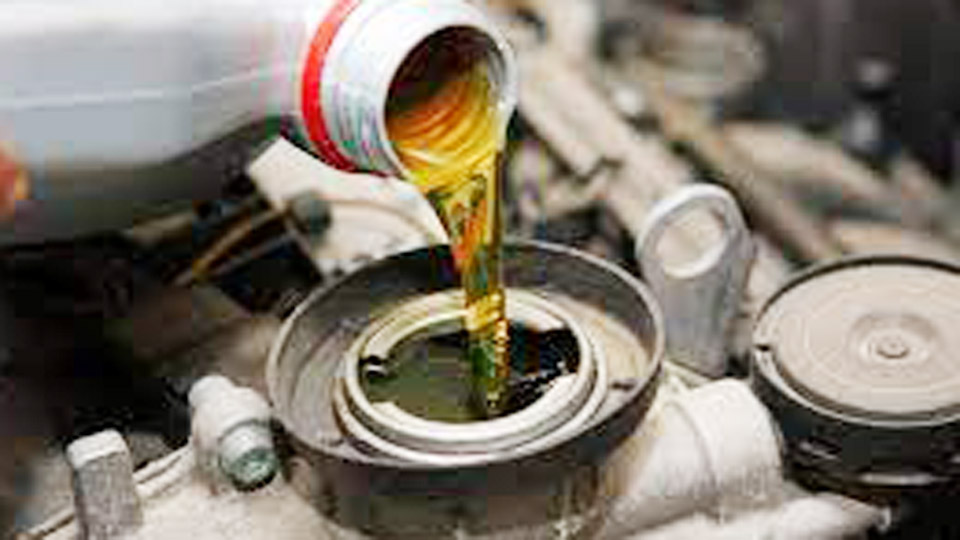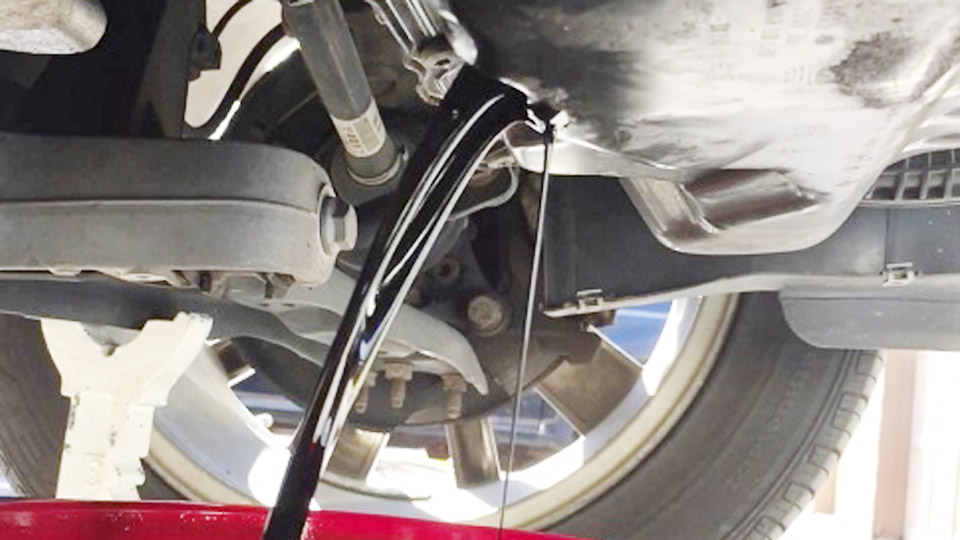Not long ago, I was heading to work when my car suddenly started shaking at stoplights and felt like it had lost half its power. No warning lights at first—just rough idling and sluggish acceleration. I knew something was off. A quick check later, I found out one of my spark plugs had gone bad. And like many drivers, my first thought was, Can I still drive this thing? I mean, it’s just one spark plug, right?
Well, after going through that frustrating experience and talking to a trusted mechanic, I learned the hard truth: while your car might still run with a bad spark plug, doing so can lead to bigger problems—and a much more expensive repair bill.
I’ll share exactly what happened to me, the warning signs you shouldn’t ignore, and whether or not it’s actually safe to keep driving when a spark plug fails. If you’re in the same boat I was, this might just save your engine—and your wallet.

Image by oards
What Does a Spark Plug Do?
Before we get into whether you can drive with a bad spark plug, let’s talk about what spark plugs do. They’re small but mighty parts of your car’s engine. Spark plugs ignite the air-fuel mixture in the engine’s cylinders, creating the combustion that powers your car.
Each cylinder has its own spark plug, so if you’ve got a four-cylinder engine like my Civic, you’ve got four spark plugs. My friend’s V8 Mustang has eight.
When a spark plug fails, it can’t ignite the fuel properly, leading to misfires, poor performance, or even engine damage if ignored. I learned this when my Dodge Ram started stuttering on a road trip—it was a bad spark plug causing one cylinder to misfire.
Signs of a Bad Spark Plug
How do you know if one spark plug is bad? Here’s what I look for based on years of working on cars:
Rough Idling: The engine shakes or vibrates at stoplights. My Civic did this when one plug started failing at around 80,000 miles.
Misfiring: You feel jerks or stutters while driving, like the engine’s coughing. My neighbor’s Toyota Corolla had this issue, and it was a single bad plug.
Poor Acceleration: The car feels sluggish or hesitates when you hit the gas. I noticed this in my Jeep Wrangler after off-roading.
Reduced Fuel Economy: A bad plug makes the engine work harder, burning more gas. My friend’s Chevy Silverado’s gas mileage tanked with a faulty plug.
Check Engine Light: A blinking or steady light often signals a misfire. My Mustang’s light came on, and a scan pointed to a bad spark plug.
Hard Starting: The car struggles to start or takes longer to crank. This happened on my brother’s Nissan Altima.
If you’re seeing these signs, one or more spark plugs might be the culprit. But can you drive with one bad? Let’s explore.
Can You Drive with a Bad Spark Plug?
The short answer is: maybe, but it’s not a great idea. Driving with one bad spark plug depends on the situation, the severity of the issue, and how far you need to go. Here’s what I’ve learned from my own cars and helping friends:
Short Distances (Under 10 Miles): If you’re close to home or a shop, you can probably limp along to get it fixed. I drove my Civic about 5 miles to a mechanic with a misfiring plug, and it was fine for that short trip.
Long Distances: Driving far with a bad spark plug is risky. It can damage your engine, catalytic converter, or other parts. My buddy pushed his F-150 too far with a bad plug, and it fried the catalytic converter—expensive mistake.
Mild Symptoms: If the car’s just idling rough but still drives okay, you might get away with a short drive. My Corolla was drivable with a slight misfire, but I didn’t push it.
Severe Symptoms: If the car’s jerking badly, stalling, or the check engine light is blinking, don’t drive. I had to tow my Jeep when a plug failed completely—it wasn’t worth the risk.
Driving with a bad spark plug puts stress on your engine, so it’s best to fix it ASAP. Let’s look at what could go wrong if you keep driving.
Risks of Driving with a Bad Spark Plug
Ignoring a bad spark plug can lead to bigger problems. Here’s what I’ve seen happen:
Catalytic Converter Damage: Unburned fuel from a misfiring cylinder can overheat and clog the catalytic converter. My friend’s Silverado needed a $1,200 converter replacement because of this.
Engine Damage: A misfiring cylinder can cause uneven wear or overheating. I saw this on a Nissan with a bad plug that ran too long.
Poor Fuel Economy: You’ll burn more gas, hitting your wallet. My Dodge’s mileage dropped 5 mpg with a bad plug.
Increased Emissions: A bad plug makes your car pollute more, which could fail an emissions test. My Mustang barely passed inspection once because of this.
Stranded on the Road: A failing plug can cause your car to stall. I had to push my brother’s Altima off the road when it died mid-drive.
These risks make it clear: driving with a bad spark plug isn’t worth it for long. Let’s talk about how to diagnose and fix it.
How to Diagnose a Bad Spark Plug
Before you decide to drive or fix it, you need to confirm a bad spark plug. Here’s how I check, based on my experience:
Step 1: Listen and Feel
Drive your car and note any rough idling, misfiring, or sluggishness. My Civic’s engine shook like it was shivering when one plug went bad. A blinking check engine light often means a misfire.
Step 2: Check the Spark Plugs
Pop the hood, locate the spark plugs (usually attached to coils or wires on top of the engine), and inspect them. You’ll need a socket wrench and spark plug socket to remove them. Look for:
- Black or Sooty Deposits: Indicates a rich fuel mixture or oil burning.
- White or Ashy Deposits: Suggests overheating or lean mixture.
- Worn Electrodes: The tip looks rounded or eroded.
- Cracked or Damaged: Obvious signs of failure.
I found a sooty plug in my Jeep that was causing misfires—replacing it fixed the issue.
Step 3: Use an OBD-II Scanner
If your check engine light is on, plug in an OBD-II scanner to read the code. Codes like P0301 (cylinder 1 misfire) pinpoint the bad plug. I borrowed a friend’s scanner for my Mustang, and it saved me guesswork.
Step 4: Swap Plugs to Test
If you suspect one plug, swap it with another cylinder’s plug and see if the misfire moves. I did this on my Corolla, and the misfire followed the plug, confirming it was bad.
If you confirm a bad spark plug, replace it before driving far. Here’s how to do it.
How to Replace a Bad Spark Plug
Replacing a spark plug is a straightforward job I’ve done on many cars. Here’s my step-by-step process:
Step 1: Gather Tools and Parts
You’ll need:
- Spark plug socket and ratchet: For removing and installing plugs.
- Torque wrench: To tighten plugs to spec (usually 10-20 ft-lbs).
- New spark plugs: Match your car’s make, model, and year (check the manual).
- Anti-seize compound: For easy removal later.
- Dielectric grease: For the plug boot or coil connection.
- Gloves and safety glasses: To stay safe.
I always buy OEM or high-quality plugs (like NGK or Bosch) for my Honda—they last longer.
Step 2: Prepare the Car
Park on a flat surface, let the engine cool, and disconnect the negative battery terminal to avoid electrical issues. I forgot this once on my Dodge and got a small shock—lesson learned.
Step 3: Remove the Old Spark Plug
Locate the spark plug (follow the ignition coil or wire). Remove the coil or wire, then use the spark plug socket to unscrew the plug. I had a stuck plug in my Jeep, so I used penetrating oil to loosen it.
Step 4: Install the New Spark Plug
Apply a thin layer of anti-seize to the plug’s threads (avoid the electrode). Hand-thread the new plug to avoid cross-threading, then tighten with a torque wrench to the manual’s spec. Reattach the coil or wire with a bit of dielectric grease. I did this on my Mustang, and it ran smooth as butter.
Step 5: Test Drive
Reconnect the battery, start the car, and take a short test drive. Check for smooth idling and acceleration. My Civic felt like new after replacing one bad plug.
Time and Cost of Replacing a Spark Plug
How long does it take? For one plug, expect 15-30 minutes if you’re new, or 5-15 minutes with experience. Replacing all plugs (recommended) takes 1-2 hours.
Here’s a cost breakdown based on my experience:
| Item | Estimated Cost | Notes |
|---|---|---|
| Spark Plug (per plug) | $5-$25 | OEM or premium brands cost more |
| Spark Plug Socket | $10-$20 | Reusable for future jobs |
| Torque Wrench | $30-$100 | Optional but ensures proper tightening |
| Dielectric Grease/Anti-Seize | $5-$10 | Small amounts needed |
| Professional Replacement | $50-$150 per plug | Includes labor, varies by shop |
I saved about $100 doing my Honda’s plugs myself, but shops are faster for complex engines.
Choosing the Right Spark Plugs
Not all spark plugs are the same. Here’s what I’ve learned:
| Plug Type | Pros | Cons | Best For |
|---|---|---|---|
| Copper | Cheap, good conductivity | Short lifespan | Older cars, budget fixes |
| Platinum | Longer life, reliable | More expensive | Most modern cars |
| Iridium | Longest life, best performance | Priciest | Performance cars, newer models |
| Double Platinum | Durable, good for high-mileage | Costly | Cars with waste-spark ignition |
I use iridium plugs in my Civic for longevity, but copper worked fine in my old Jeep.
Common Issues with Bad Spark Plugs
Here’s what I’ve seen go wrong with bad plugs:
- Misfires Moving to Other Cylinders: A bad plug can mask other issues like a faulty coil. My Mustang had this—replacing the coil fixed it.
- Hard-to-Reach Plugs: Some engines (like V8s) have tight access. My friend’s F-150 was a pain to work on.
- Cross-Threading: Screwing in a plug wrong can damage the engine. I was careful with my Corolla to avoid this.
- Ignoring Other Problems: A bad plug might hide issues like bad fuel injectors or vacuum leaks. My Dodge needed more than just a plug replacement.
Why Spark Plugs Go Bad
Spark plugs don’t last forever. Here’s what wears them out:
- Normal Wear: Electrodes erode over time. My Civic’s plugs lasted about 80,000 miles.
- Oil or Carbon Fouling: Oil leaks or rich fuel mixtures coat plugs. I saw this in my Jeep after a valve cover gasket leak.
- Overheating: High engine temps can damage plugs. My Mustang’s plugs showed white deposits from this.
- Poor Maintenance: Skipping tune-ups lets plugs degrade. My brother’s Altima suffered from this.
DIY vs. Professional Spark Plug Replacement
Should you replace the plug yourself? Here’s how I decide:
DIY Replacement
If you’ve got basic tools and some confidence, it’s a simple job. I did my Honda’s plugs in my driveway in under an hour. You’ll save on labor, but be careful not to overtighten or cross-thread.
Professional Replacement
A shop is faster and comes with a warranty. I took my friend’s BMW to a mechanic because the V6 engine was tricky to access. If you’re not sure or lack tools, a pro is worth it.
Preventing Spark Plug Problems
To keep your spark plugs in top shape, here’s what I do:
- Follow Maintenance Schedules: Replace plugs per your manual (usually every 30,000-100,000 miles).
- Check Coils or Wires: Faulty ignition parts can ruin plugs. I replaced a coil in my Mustang to prevent this.
- Use Quality Fuel: Bad gas can foul plugs. I stick to top-tier gas for my Civic.
- Monitor Engine Health: Fix oil leaks or misfires early to protect plugs.
These habits have kept my cars running smoothly.
What Not to Do with a Bad Spark Plug
Here’s what I’ve learned to avoid:
- Don’t Drive Long Distances: It risks catalytic converter or engine damage.
- Don’t Ignore Symptoms: A misfire won’t fix itself. My Jeep got worse when I delayed.
- Don’t Use Cheap Plugs: They wear out faster and perform poorly.
- Don’t Overtighten Plugs: Stripping threads is a costly fix.
I learned the overtightening lesson on my Dodge—had to re-tap the threads.
Practical Tips for Handling a Bad Spark Plug
Here are some tips to make dealing with a bad spark plug easier:
- Carry a Spare Plug: I keep one in my toolbox for quick fixes.
- Check All Plugs: If one’s bad, others might be close. I replace all at once.
- Use a Torque Wrench: Prevents overtightening and damage.
- Keep an OBD-II Scanner: Diagnosing misfires is easier with one.
These tricks have saved me time and money.
Wrapping It Up: Drive Smart, Fix Fast
So, can you drive your car if one spark plug is bad? For a short trip to the shop, maybe—but it’s not a good idea for long drives or if symptoms are severe. A bad spark plug can cause misfires, poor fuel economy, and even engine damage, as I’ve seen with my own cars and friends’ vehicles. With the right tools and know-how, replacing a spark plug is a quick fix you can often do yourself.
Stay on top of maintenance, listen to your car, and don’t ignore warning signs. Here’s to smooth rides and a healthy engine!
Frequently Asked Questions
Can you drive a car with one bad spark plug?
You might drive a short distance if symptoms are mild, but it’s risky. It can damage the catalytic converter or engine, so fix it ASAP.
How do I know if a spark plug is bad?
Look for rough idling, misfiring, poor acceleration, bad fuel economy, or a check engine light. Inspect the plug for wear or deposits.
How much does it cost to replace a spark plug?
DIY costs $5-$25 per plug, plus $20-$100 for tools if needed. Professional replacement runs $50-$150 per plug with labor.
How long do spark plugs last?
Typically 30,000-100,000 miles, depending on the type (copper, platinum, or iridium) and driving conditions. Check your manual.
What happens if I don’t replace a bad spark plug?
It can cause misfires, reduced fuel economy, catalytic converter damage, or engine wear. Fix it to avoid costly repairs.


